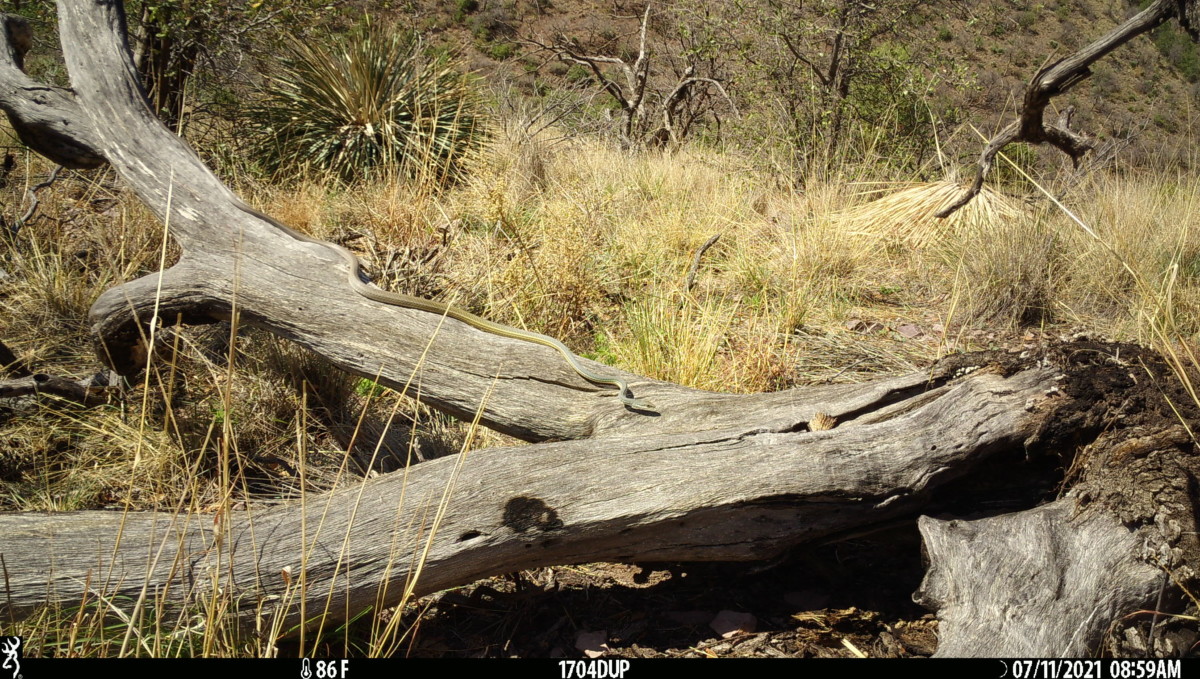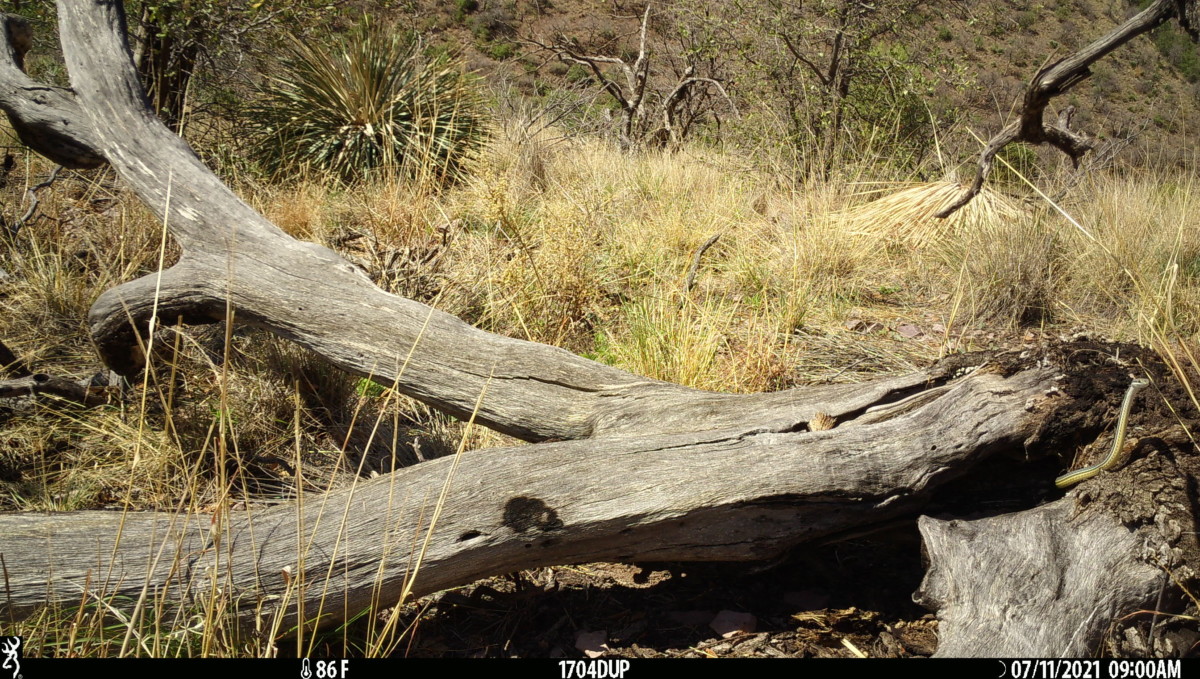On July 11, almost 16 months after the start of our Border Wildlife Study, our trail cameras detected the first snake of the study — a Sonoran whipsnake (Masticophis bilineatus)!

Photo caption: A Sonoran whipsnake slithering down a fallen log (see left side of log).
The Sonoran whipsnake is a common species seen in the Sky Island region. These snakes are known for the periscoping behavior when hunting (see image 2).
While this might be the first snake we’ve photographed during the study, this doesn’t mean that the region is empty of snakes! It is only due to the nature of our remote cameras that we haven’t picked them up before.
Detecting any reptile with a remote camera is very tricky. Remote cameras rely on two sensors to determine when to take the photo: heat and motion. These cameras are optimized for large, warm-blooded mammals like deer. Birds are also commonly detected because of their fast movements and higher body temperatures. However, with reptiles, the heat sensor often overlooks them because their bodies are the same ambient temperature as their environment. So, the camera must rely on motion alone. This greatly reduces the chance that one will be photographed.

Photo caption: The snake lifts its head to survey its surroundings and look for prey (see right side of log).
Additionally, snakes are small, swift moving animals. Even if the camera can sense the motion, the reptile is often long gone, scampering into the long grass or under cover, by the time our tech snaps a picture.
We’ve detected several lizards over the course of the Border Wildlife Study, but the majority of these are basking on logs and rocks. This whipsnake was also detected on a fallen log, and I believe it is just luck that it happened to stick around long enough for us to see it!
References:

